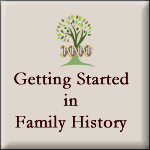
|
This Class is for those just starting out on their Family History journey, those who have inherited
a family tree and aren't sure what to do with it, and those who have started a tree, but don't know where to
go from there. Family History is a wonderful hobby and a great adventure if you know how to do it.
You can meet and come to know those who came before you, how they lived, what the believed, what their world was like,
and what they accomplished in their lifetime.
Let's get started!
|
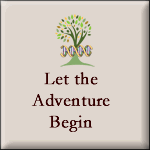
|
This Class is for those have strated a tree, collected some data, but are not sure what to do
with it and perhaps feeling this is not so much fun. It summarizes some of the specific steps
described in Getting Started, outlines some do's and dont's, then, briefly describes my approach to
developing biographies and telling the family story.
This is a short class intended to be a bridge between Getting Started and The subjects of the classes
that follow.
|
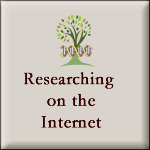
|
We live in a wonderful time for Family History. Hunderds of millions of historical records have been
indexed and digitized and are available on the Internet. There are also many genealogies, books,
maps, and other sources of information as well as genealogy specific websites with tools and data
to help us. But how do we find what we are looking for in this vast sea of information?
This class discusses researching, incuding a describing methodology, the structure of a filing system, and key websites and tools you can use and how best to utilize them to aid
in your search. This not a long list of websites, but rather a discussion about the most important ones.
inculding those that will lead you to others. Over time, as you become more proficient at researching on the web
you will develop your own list of sites that are most useful to you. This is agood place to start, and
if you do have a short list already you might check to see if there any additional sites that could be useful to you.
|
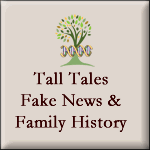
|
The Internet is great source of information, but also false information. Too many people takes shortcuts,
just copying what others claim without finding a valid source. It is shameful that this is so common
when so many auntic records are avaialble from relaile sources.
This class uses numeorus examples of cases where information seems genuine and has been widely spread
across the Internet, but is provably false. It shows how many of these false legends came to be and how we can
check to verify if they are correct or not. There are two expressions that summarize the lessons taught in this class:
if it sounds too good to be true, it probably is, and if it smells fishy, don't swallow it.
Proving widespread folklore falso can be almost as rewarding as dicovering what really happened.
|
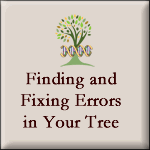 |
Sadly, most peoples' trees contain a lot more errors than they think. In trees I have scanned for others, I have found
up to 48% of the entries to be wrong, with an average of over 20%. Errors creep into trees very easily, and I check
my own trees pweriodically and always find at least a few errors.
This class discusses how eoors occur, how to find them, and what to do about it. It also discusses tree consistancy checkers,
which are a valuable but imperfect tool. The best solution is to carefully review each entry as youi make it, and guidlines are
provided on what to look for. Finally, NEVER let any software of any kind automatially add data to your tree. Finally, a checklist
id provided that you can use to check entries in your tree for errors.
|
<-- GEDCOM Files and Tree Checkers -->
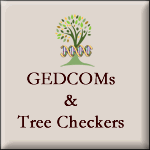
|
GEDCOM makes it easy to move or copy your tree from one platform to another. It can also be used to share your tree
with others or as a backup mechanism. It is easy to do, but the exact method depends on your platform. The first part of this
class discusses GEDCOM files and shows how to use them on the most common platforms.
Tree consistency checkers are an important tool you can use to find and correct errors in your tree. The second secition of
this calls discusses these tools and how to use them.
|
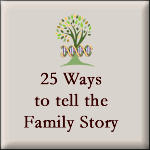
|
To leave a legacy to your descendents you must do more than build a tree, you need to tell the family story.
This is not as hard as it sounds, and even if you are not a writer, there are ways to do this.
This class presents twenty-five different things you can do to tell your family story and leave
things to be passed won as heirlooms for generation to come. Many require no writing, and using mulitple
ways will help ensure that your work in family history lives on long after you are gone.
|
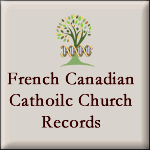
|
Did your ancestor live in a foriegn country where the records you need are in a language that you don't
understand and are only available as images of hand written documents that look impossible to interpret?
Don't dispair. This class uses images of French Catholic Church records written by parish priests in
the early-mid 1700s to show you how to accurately gleen important information such as names, dates, and
events from these old records. The same techniques can be used with other languages from other
eras and locations.
|
<--! Using Cluster Research -->
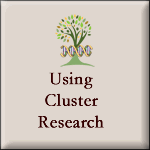
|
Are you frustrated by a brick wall? Have an ancestor you can't find any recpords of? Cluster research may
help you prove who they were and tell you a lot about them.
This class demonstrates how cluster research was used to find and prove not only the name of an ancestor, but
also a information about his life, his wife and family, when he died, and what happened to his family after
he passed.
|
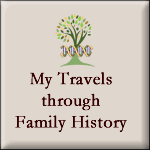
|
This class tells the story of my travels through Family History from picking up the early work my father left,
long after he had died to publishing detailed books about my ancestors. There were may steps along the way
producing useful results, and many lessons learned about what to and not to do. It also tells the stories of some
amazing ancestors I met along the way and how they fit in and impacted history.
The class concludes by summarizing the six big lessons learned along the way and how you can apply them
to improve your own Family History work.
|

|
You might also be interested in some of the talks I have given on History.
|


